Discover valuable tips for enhancing your home’s exterior with landscaping and design. Learn about hardscaping, softscaping, plant selection, lighting, water features, and sustainable practices. Create a stunning outdoor space that boosts curb appeal and provides years of enjoyment. Check out our blog for expert insights and advice!
In this blog, we’ll discuss some of the best tips for enhancing your home’s exterior with landscaping and design. From choosing the right plants to incorporating custom touches, we’ll help you create a beautiful outdoor space that will be the envy of all your neighbors!

Definition of Landscaping and Design
Landscaping and design are often thought of as two interchangeable terms, but they are actually quite distinct from each other.
Landscaping refers to the physical elements that make up a particular outdoor space, such as plants, trees, rocks, and other natural features.
Design, on the other hand, is more focused on the aesthetics of the space, including the placement of those physical elements, the use of color and texture, and other design considerations.
Together, landscaping and design create a harmonious outdoor space that not only looks beautiful, but also serves a practical purpose, such as providing shade, privacy, or a comfortable place to relax and enjoy nature.
A skilled landscaper and designer can transform any outdoor area into a functional and eye-catching space that meets the needs of the homeowner while enhancing the appeal of their property.
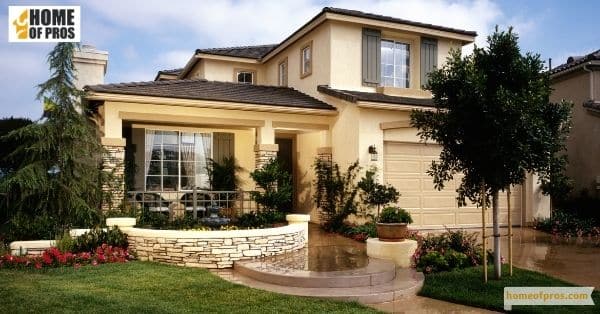
Types of Landscaping and Design Elements to Consider
Hardscaping
Hardscaping plays an important role in landscaping and can enhance the overall look of your outdoor space. From creating outdoor living areas to adding walkways and retaining walls, hardscaping offers numerous design options that can complement any landscape style.
When considering hardscaping, it’s crucial to think about the type of materials you want to incorporate, such as natural stone or brick, as well as the design elements you want to include, such as lighting, water features, or fire pits.
The right design and materials can not only add beauty to your outdoor space but also functionality and value to your home. Consulting with a professional can help you choose the best options for your specific needs and budget.
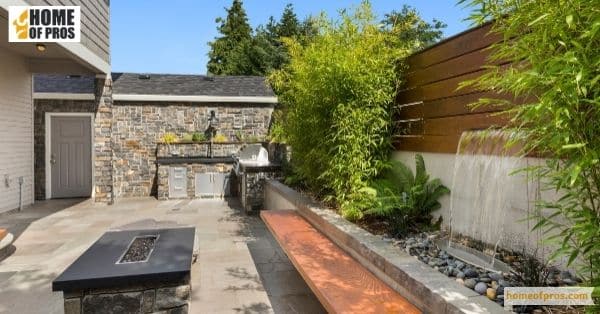
Softscaping
Softscaping, the art of incorporating living elements into a landscape, is an essential component of any successful landscaping project. When designing soft scapes, one needs to consider various elements, such as form, color, texture, and scale, as well as the climate and environmental conditions of the location.
A skilled soft scape designer can use plants, trees, shrubs, and other organic materials to create dynamic and visually appealing landscapes that attract wildlife and add value to any property.
Ultimately, softscaping is a key aspect of any property’s exterior design and should be considered when planning any landscaping project.
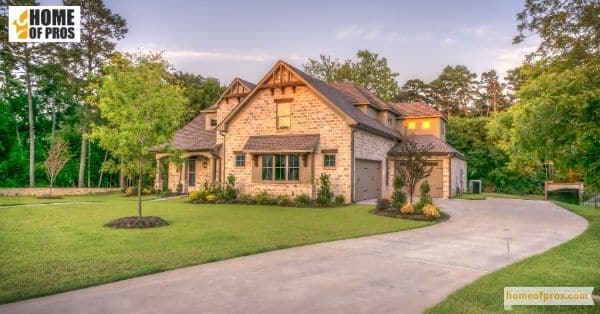
Plantings and Greenery
When it comes to landscaping, there are numerous design elements and types of plantings to consider. From lush greenery to colorful flowers, you can create a beautiful outdoor space that reflects your personal style.
When selecting your plants and greenery, think about the specific needs of your space, including factors such as soil type, sunlight, and climate. In addition to plant selection, it is also important to consider hardscaping elements such as paths, retaining walls, and focal points like fountains or sculptures.
By combining these elements, you can create a captivating outdoor space that is sure to enhance the look and feel of your property.
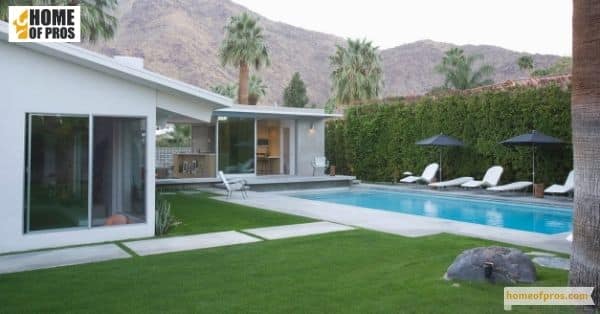
Lighting
When it comes to designing a beautiful outdoor space, lighting is an essential component that can completely transform the look and feel of your landscaping. There are many different types of lighting to choose from, including path lights, spotlights, floodlights, and decorative string lights, each with its own unique purpose.
Consider the specific design elements you want to highlight, such as architectural features, trees, or water features, and choose lighting that will enhance and draw attention to these areas.
It’s also important to consider the placement and intensity of the lighting, as well as energy efficiency and maintenance requirements. With the right lighting, your outdoor space can truly shine.

Water Features
Water features can be an excellent addition to any landscape design. They can range from small fountains to large ponds, and they can enhance the aesthetic appeal of your outdoor space while also providing a relaxing atmosphere.
When considering water features, it’s essential to take into account the type of design elements that will complement them. The size of your yard, the existing flora, and the style of your home are just a few factors to consider.
In addition, the type of water feature you choose will also determine the design elements needed. For instance, if you opt for a pond, you may need to include aquatic plants and rocks, while a simple fountain might only require a few potted plants.
Regardless of the water feature you choose, it’s crucial to ensure that it fits well with the overall design and creates a cohesive look for your outdoor space.
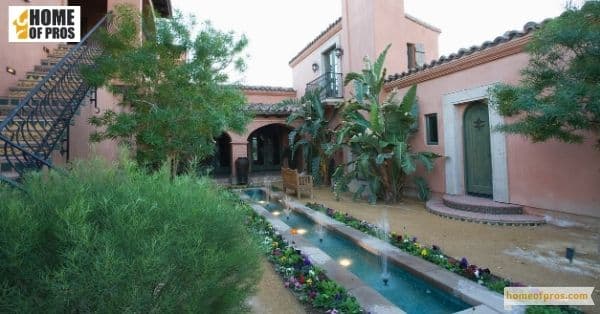
Incorporating Sustainable and Eco-Friendly Practices in Your Landscape
As we become more conscious of the need for environmental sustainability, incorporating eco-friendly practices into our daily lives is important. When it comes to landscaping, there are a variety of ways to reduce your environmental impact and create a beautiful, sustainable outdoor space.
- Use native plants which are adapted to the local climate and require less water and maintenance.
- Using permeable surfaces, such as gravel or permeable pavers, allows water to drain into the ground instead of running off into storm drains.
- Composting grass clippings and yard waste can reduce the need for chemical fertilizers and contribute to healthier soil.
These are just a few of the many ways that homeowners can incorporate sustainable and eco-friendly practices into their landscape, promoting a healthier and more sustainable environment for all.
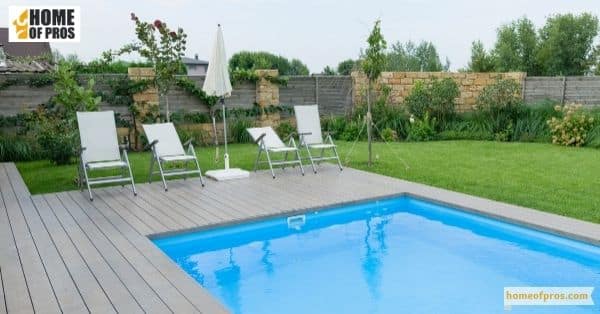
Maintaining and Updating Your Home’s Exterior: Tips and Best Practices
Once you have designed and implemented a beautiful landscape for your home’s exterior, it is essential to maintain and update it regularly to ensure its longevity and continued appeal. Here are some tips and best practices for maintaining and updating your home’s exterior.
- Regular Maintenance: Perform routine tasks like mowing, trimming, weeding, and leaf removal to keep your landscape in top shape.
- Irrigation and Watering: Ensure your irrigation system is functioning properly, fix leaks promptly, and adjust watering schedules according to seasonal needs.
- Pruning and Trimming: Regularly prune overgrown branches, remove dead or diseased plant material, and shape shrubs and hedges for healthy growth and a tidy appearance.
- Mulching and Soil Care: Apply mulch to conserve moisture, suppress weeds, regulate soil temperature, and periodically test soil and amend it with organic matter or fertilizers.
- Lighting and Outdoor Accents: Install landscape lighting to enhance ambiance and usability during evenings, and incorporate decorative pots, sculptures, or water features for added aesthetics.
Implementing these tips and best practices will help you preserve the beauty and health of your home’s exterior while ensuring an inviting and well-maintained outdoor space.

In conclusion
Enhancing your home’s exterior with landscaping and design can significantly boost its overall curb appeal and value. By investing in well-planned and executed landscaping, you can create a welcoming and visually pleasing atmosphere for your property.
A professional landscaping design can effectively highlight your home’s best features while also concealing any less attractive elements. From planting trees and shrubs to adding hardscaping features such as walkways and pergolas, the possibilities for improving your outdoor space are endless.
With the right design and regular maintenance, your landscape can continue to add value and beauty to your home for years to come.












